Discovering Authentic Croatia's Secrets With Seoski Tourism
November 4, 2021 – Village tourism or countryside tourism - Seoski tourism in Croatia - offers authentic, traditional experiences. Aleksandra Kuratko, secretary of Udruga ruralnog turizma Hrvatske (Croatian Rural Tourism Association) tells us more about it, and their work to help facilitate it
Croatia's visitor offer is evolving and expanding. There are exciting aspects of authentic Croatia to be discovered. Away from the beach, villages inland often look remarkably similar to how they did one hundred years ago. There, crops are grown and produce made in ways passed down through generations of families. And, in some lucky instances, these family farmers are willing to open their doors, invite you inside and show you how they live.
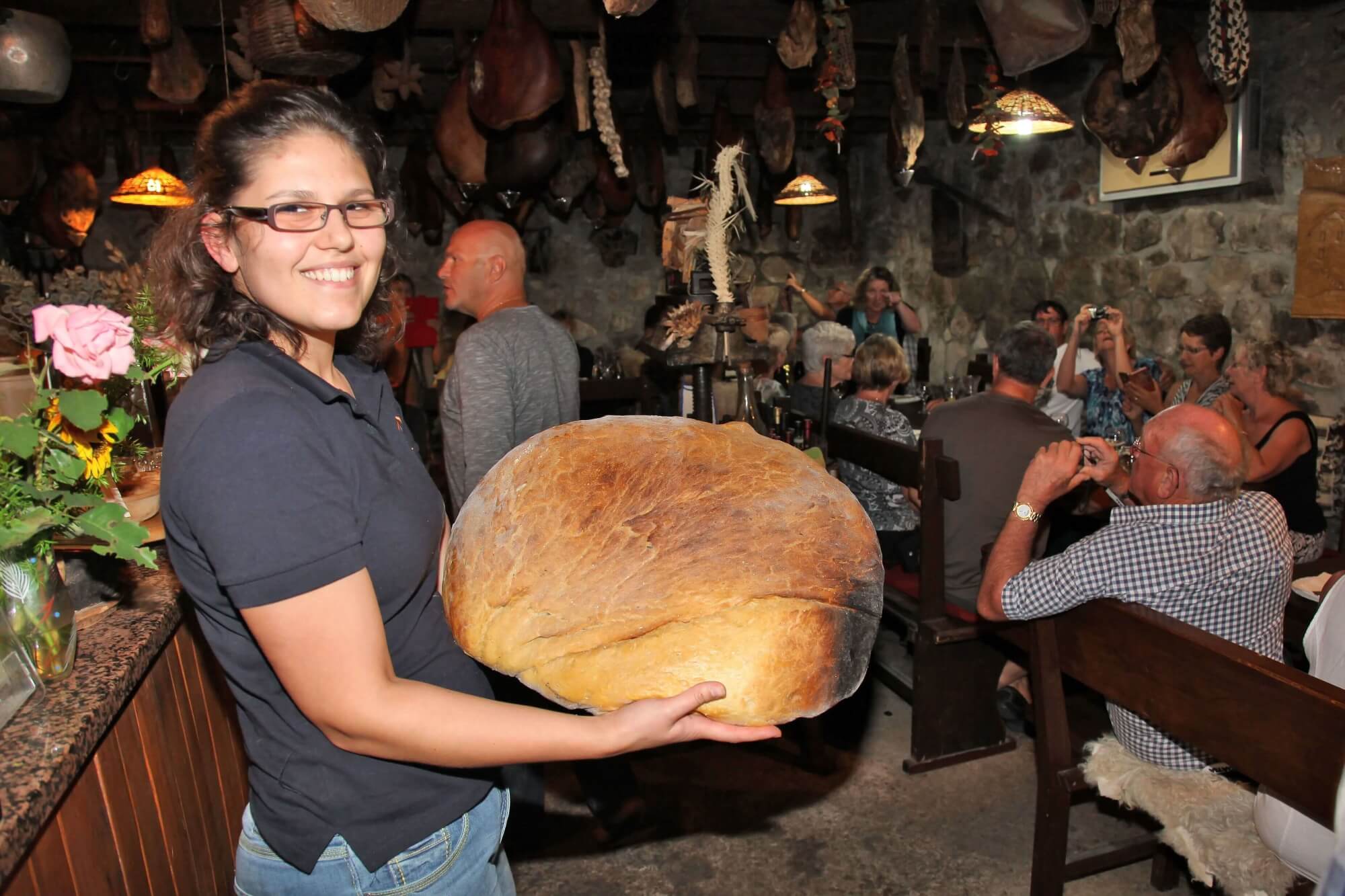 Bread from the peka at Agroturizam Antunović on Pelješac
Bread from the peka at Agroturizam Antunović on Pelješac
Seoski Tourism – translated as either village tourism or countryside tourism – is just that. Family farms that offer hospitality. These are some of the most homely and most welcoming accommodation experiences you can have in Croatia. Offering sights and sounds, tastes and flavours that you can't find anywhere else, visits or stays in Seoski Tourism places have long been loved by locals for weekend breaks or holidays outside peak summer. But, increasingly, these authentic Croatia experiences are being discovered by international visitors.
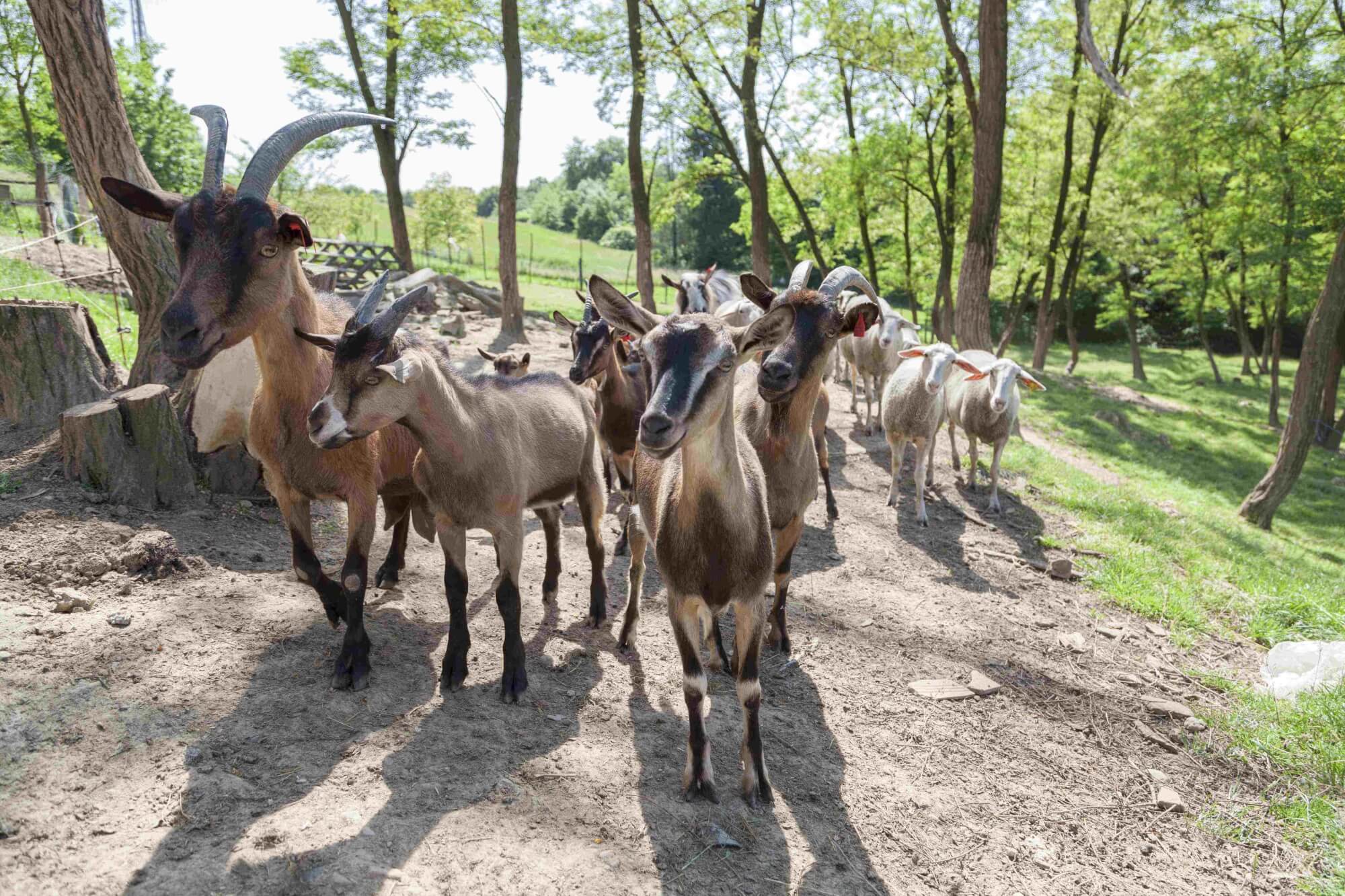 Moslavina goats at Kezele family farm © Davor Konjikušić
Moslavina goats at Kezele family farm © Davor Konjikušić
One institution trying to facilitate the growth in interest is Udruga ruralnog turizma Hrvatske - Croatian Rural Tourism Association. Since it was formed in 2016, they have tried to bring together Croatia's family farm hosts, to promote them and educate them, and to build bridges between these independents and tourist boards, tourist agencies, educators and even the wider world outside Croatia.
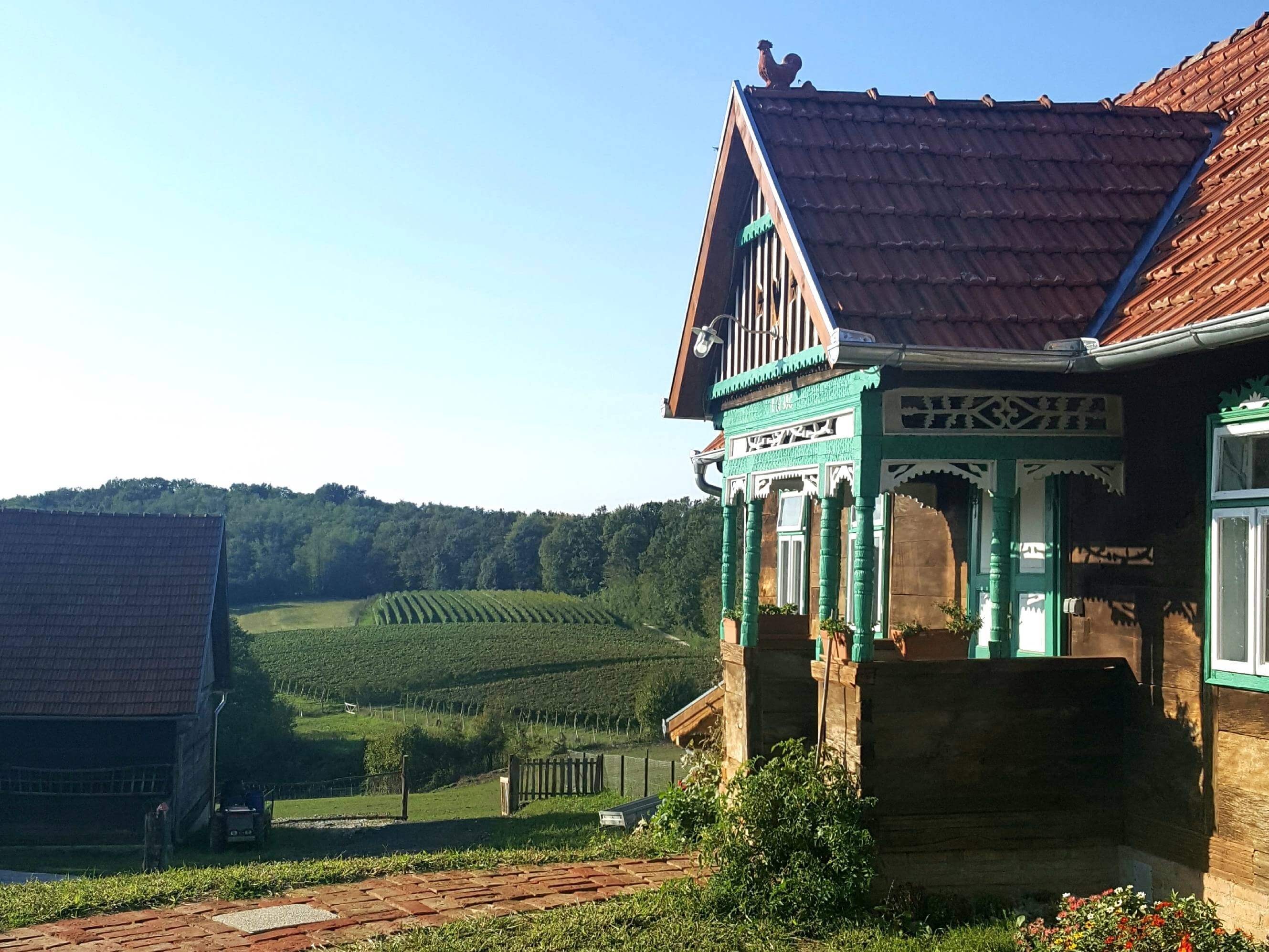 Seoski turizam Kezele in Šumećani, on the border of Zagreb County and Bjelovar Bilogora County © Davor Konjikušić
Seoski turizam Kezele in Šumećani, on the border of Zagreb County and Bjelovar Bilogora County © Davor Konjikušić
Based in Ivanić-Grad, Zagreb County, the Croatian Rural Tourism Association is currently touring the length and breadth of the country, holding workshops with as many Seoski Tourism family farms that will come. And if the farmwork doesn't allow them free time, then they can attend Croatian Rural Tourism Association workshops online.
On the eve of the association's online Seoski Tourism workshops for Central Croatia and Slavonia, TCN interviewed Aleksandra Kuratko, secretary of Udruga ruralnog turizma Hrvatske, to find out more about Seoski Tourism in Croatia.
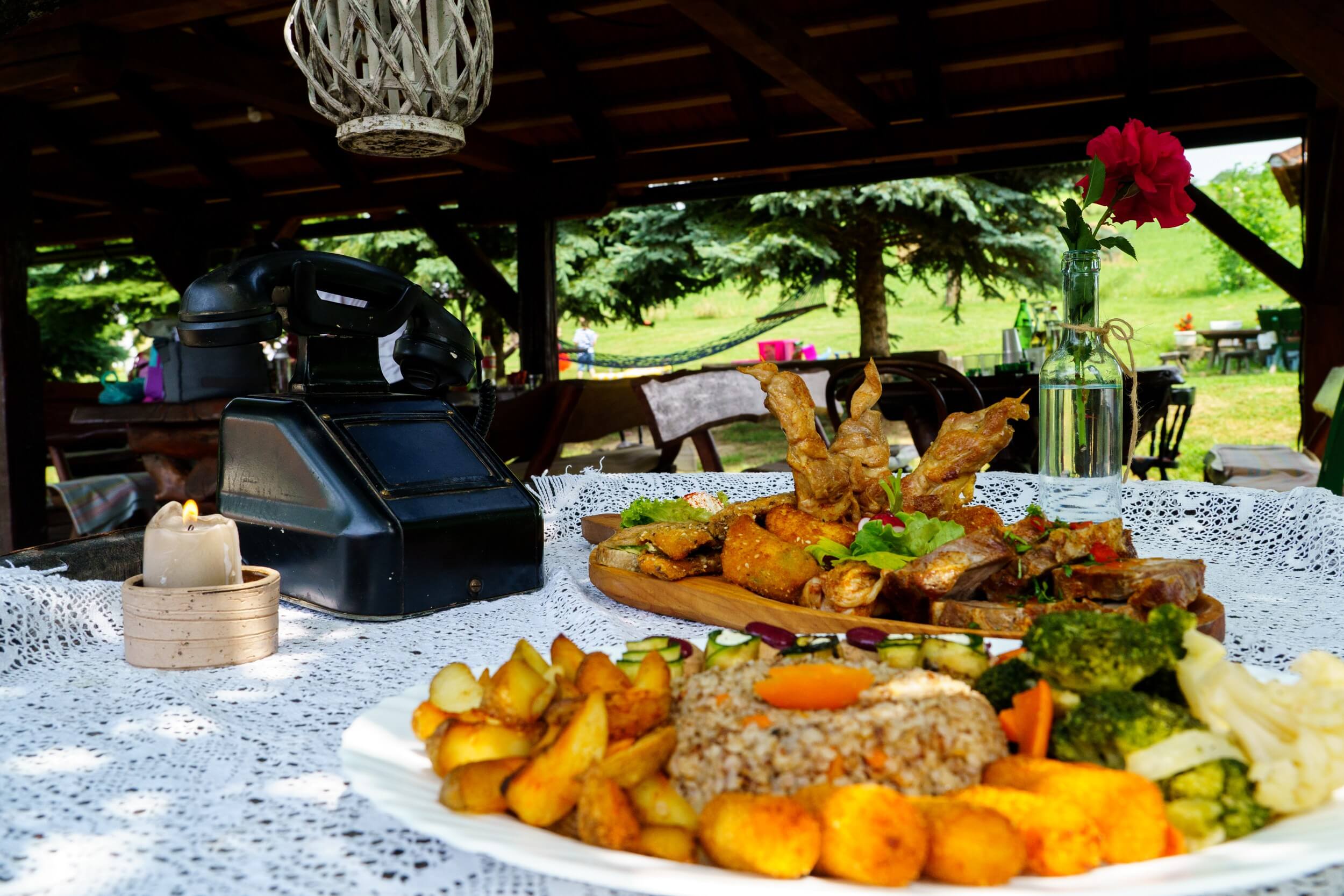 Prigorje specialties at Rakić family farm
Prigorje specialties at Rakić family farm
My name is Aleksandra Kuratko and I am secretary of Udruga ruralnog turizma Hrvatske. As an association, we are 5 years old.
We have 35 members, most of whom are service providers in what we call Seoski Tourism. We also have several tourist boards and two educational institutions as members.
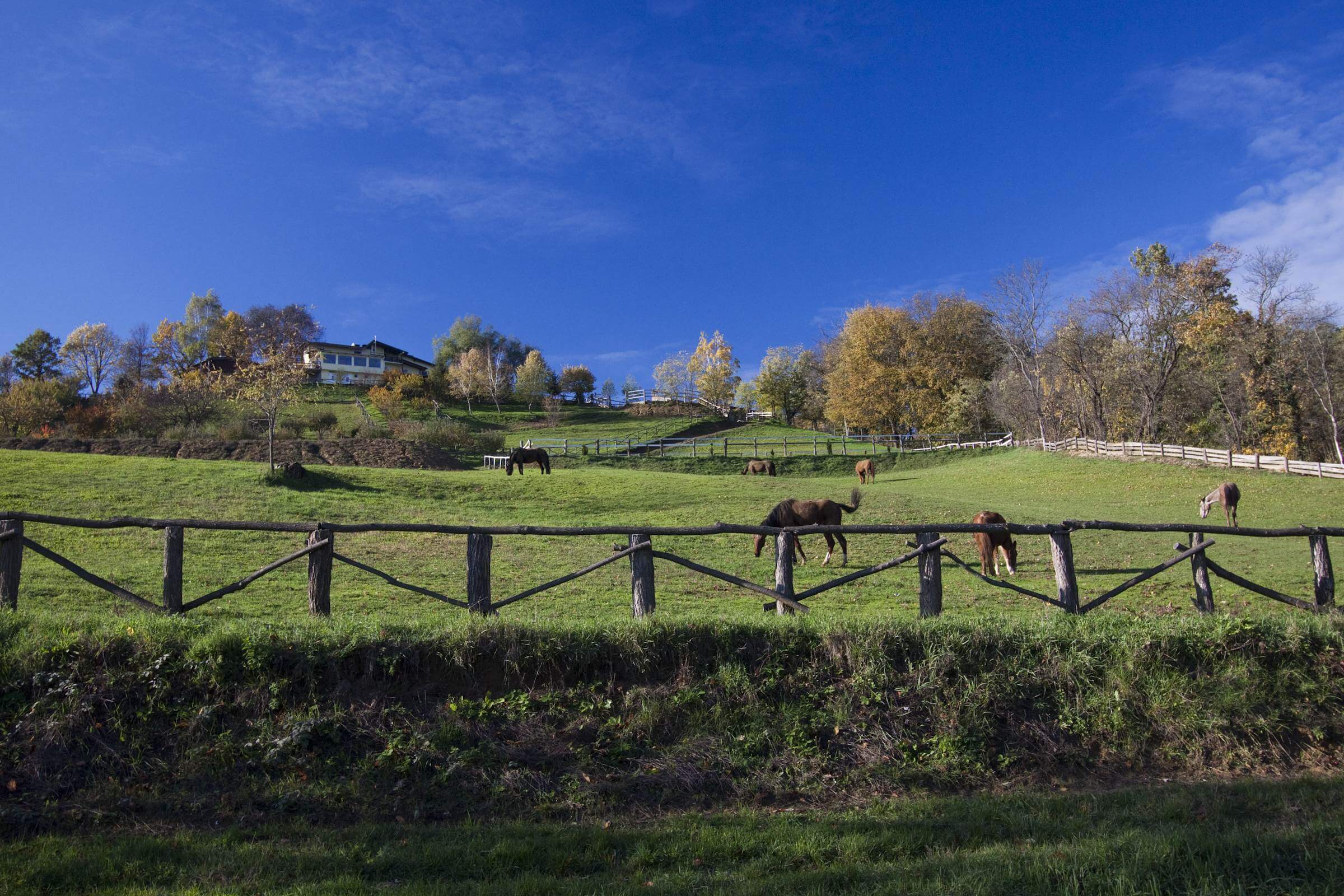 Bilogora horses in autumn at Agroturizam Na malenom brijegu © Vladimir Vlajinić
Bilogora horses in autumn at Agroturizam Na malenom brijegu © Vladimir Vlajinić
Seoski tourism is not quite the same as rural tourism, because rural tourism is many different types of tourism that happen in rural areas. Seoski tourism - which you might translate as village tourism - is quite specific. We assemble people who work in agriculture and who, at the same time, are also offering hospitality. In English, you might call them Farm Stays. Or Agro-tourism – a merging of agriculture and tourism.
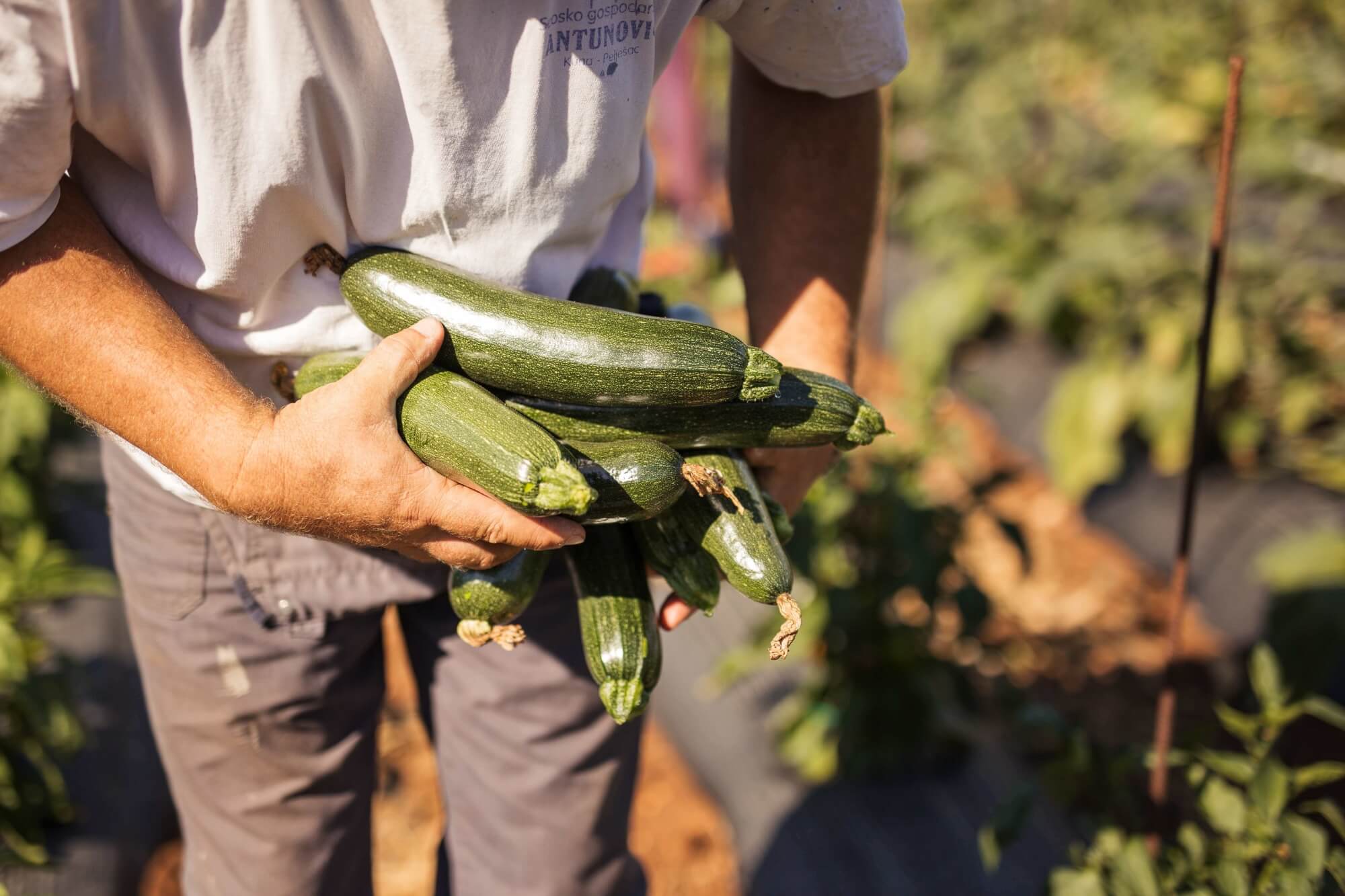 Fresh vegetables at Agroturizam Antunović on Pelješac
Fresh vegetables at Agroturizam Antunović on Pelješac
People who work on agricultural estates often take care of local cultural heritage. For example, they might maintain and renew traditional wooden or stone houses. Many also have etno collections, in which they preserve different objects from their region. Some of these objects might have been used in agriculture and households hundreds of years ago. So, they are preserving the cultural heritage of Croatian villages. This is what we call material cultural heritage. But, there's another kind.
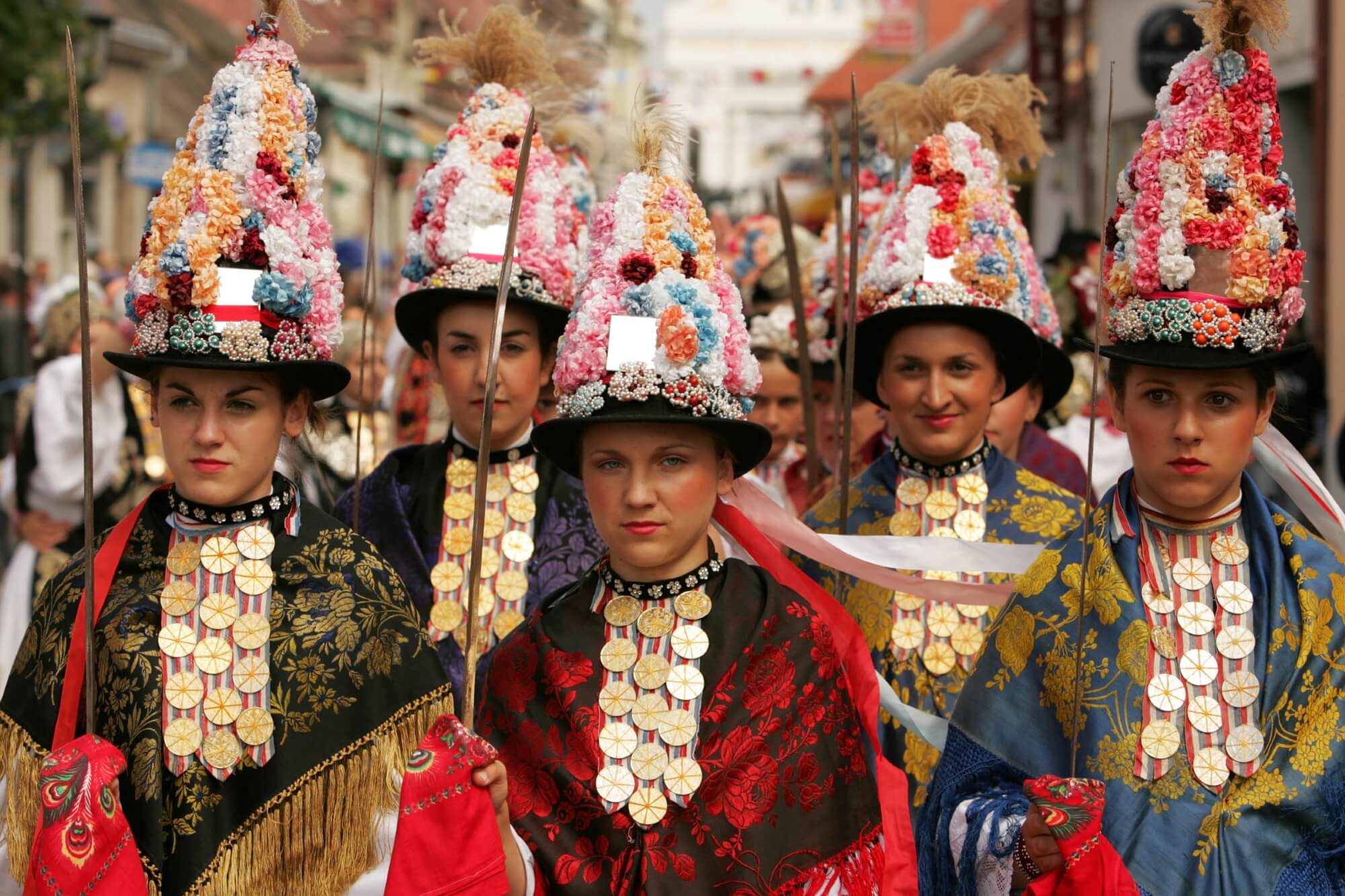 Cultural heritage preserved in one Slavonian village © Mario Romulić
Cultural heritage preserved in one Slavonian village © Mario Romulić
Non-material cultural heritage is also a part. That might be preserving old recipes of traditional, regionally-specific dishes. Or, it might be showcasing the songs and dance of local music.
We are currently running a project which is supported by the Croatian Ministry of Tourism and Sports in which we hold 37 Seoski Tourism workshops in the field all over Croatia. There will also be around 15 online workshops. The workshops are aimed at colleagues who currently operate in Seoski Tourism – they work in agriculture and offer hospitality. Also invited are local tourist boards and local action groups.
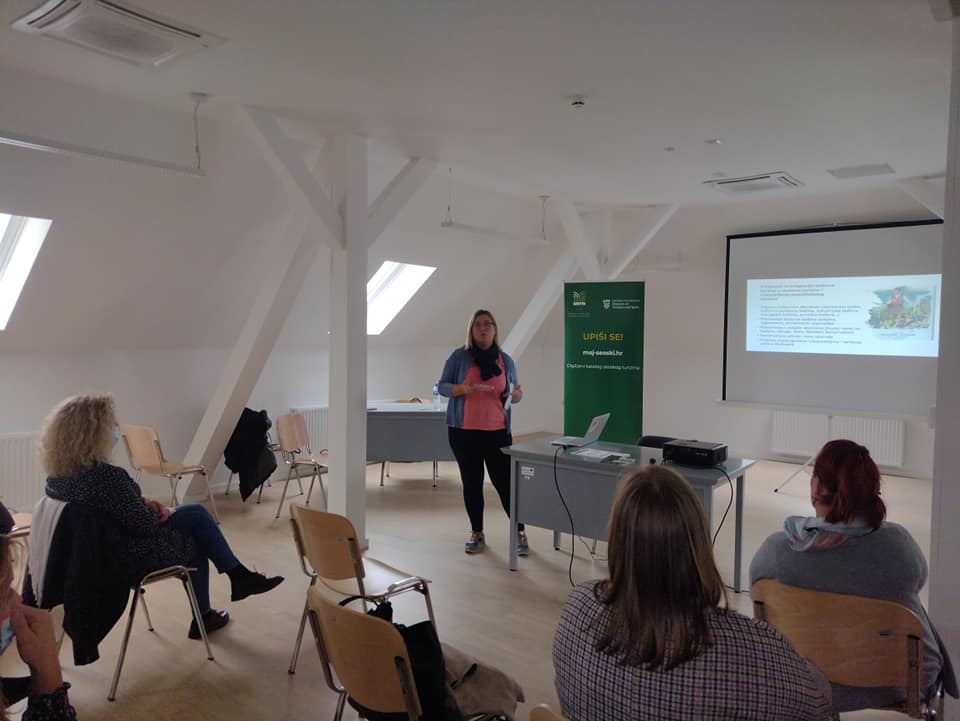 Photo from URTH workshop in Slatina
Photo from URTH workshop in Slatina
So far, we conducted 20 workshops in the regions of Central Croatia, Slavonia and Baranja, and Podunavlje. From next week until the end of the year, we will conduct the workshops in Istria, Kvarner, Lika and Dalmatia. Some service providers were not able to attend earlier workshops, because of work commitments of Covid. So, we decided to also offer access to the workshops online. Tomorrow is our first online workshop for Central Croatia and on Friday it's the online workshop for Slavonia.
These workshops are interactive discussions between our association, service providers and all other stakeholders. We discuss the legislative framework, which can be extremely complex. We talk about new trends in tourism for the post-pandemic era. We also discuss the importance of integrating cultural heritage in digital promotion.
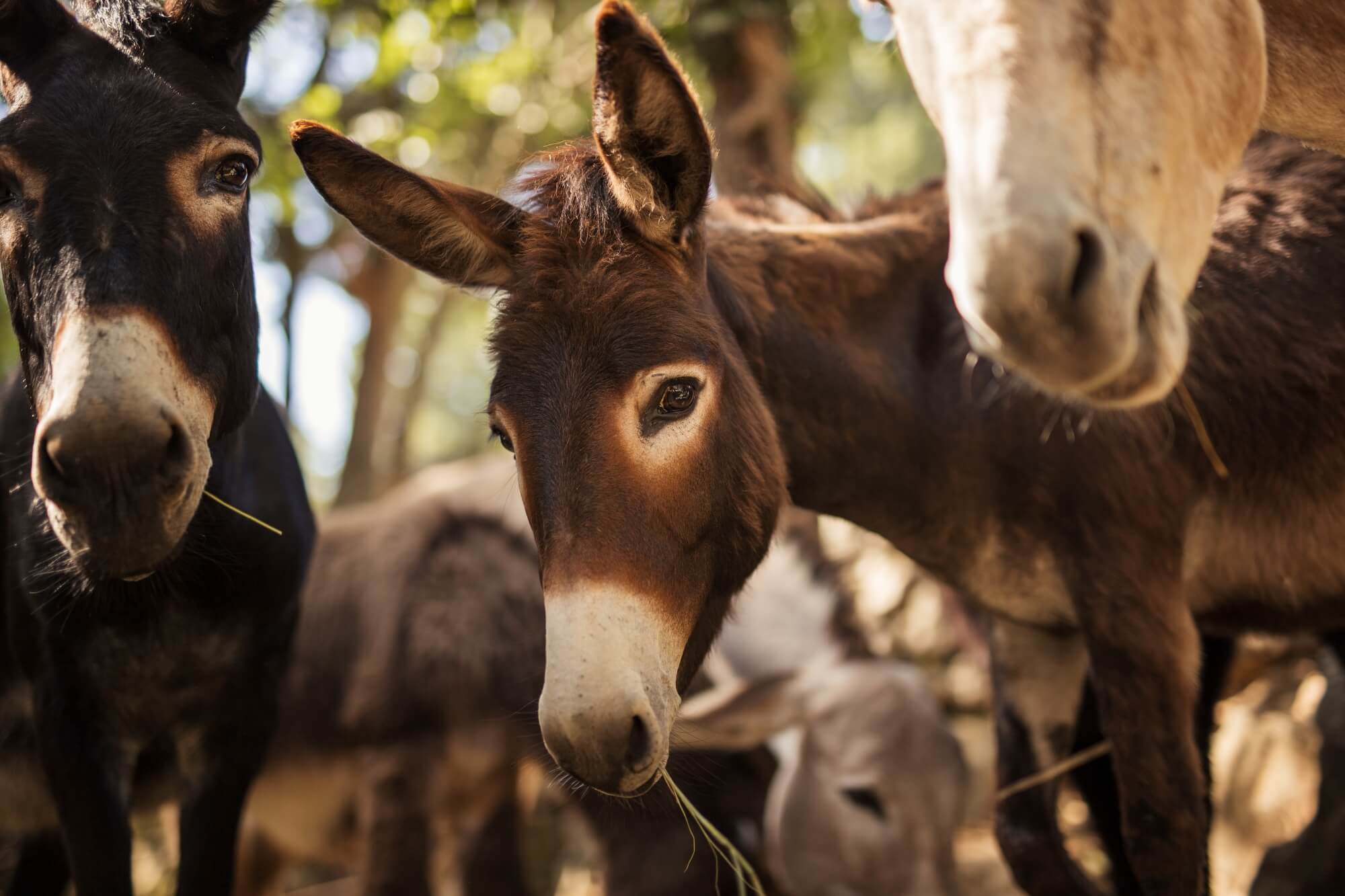 Donkey farm at Agroturizam Antunović on Pelješac
Donkey farm at Agroturizam Antunović on Pelješac
For the legislative framework, we have initiated the formation of a working group for the development of Seoski Tourism, which is now operating in the Croatian Ministry of Tourism and Sports. So, at the workshops, we ask if anyone is having issues. We collect the responses and address them in the working group.
Part of the workshop is the presentation of a new web application of Seoski Tourism, which we have developed with Croatian Ministry of Tourism and Sports. It has two purposes. One is to create a digital catalogue of Croatian Seoski Tourism. You can see region by region some of the Seoski Tourism options – currently around 40, those who have already enrolled.
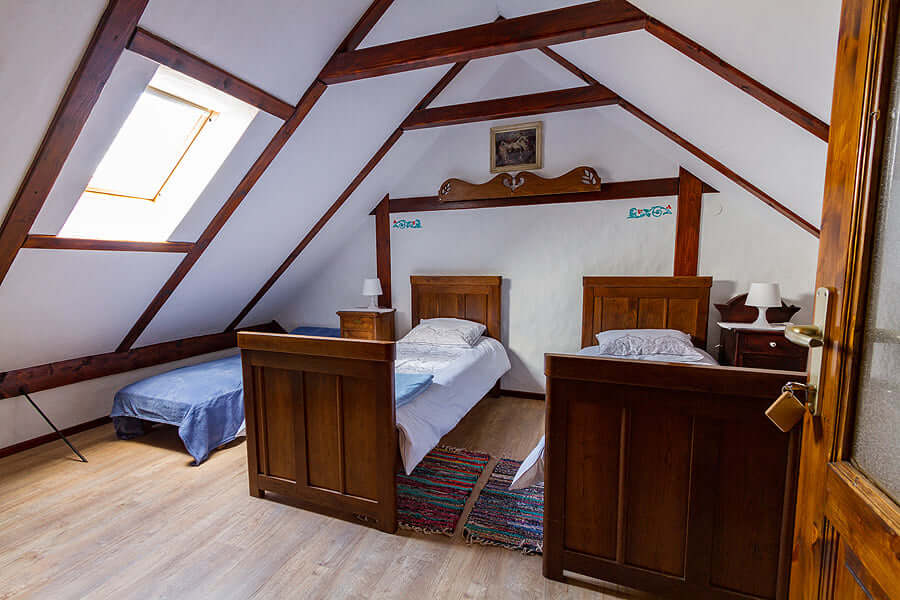 Podravina Etno rooms at Zlatni klas Otrovanec
Podravina Etno rooms at Zlatni klas Otrovanec
A version of the app is currently available on the website of the National Tourist Board. But, they are building a new website. The forthcoming version of the catalogue will likely be more user-friendly with many more functions and options. On the new website, Croatia's Seoski Tourism options will be detailed in many different languages. It should be a great resource not only for tourists but for travel agencies, journalists like you and for educational institutions. That's the reason we are devoting time in our workshops to encourage Seoski Tourism providers to enroll. We are just at the beginning of the process.
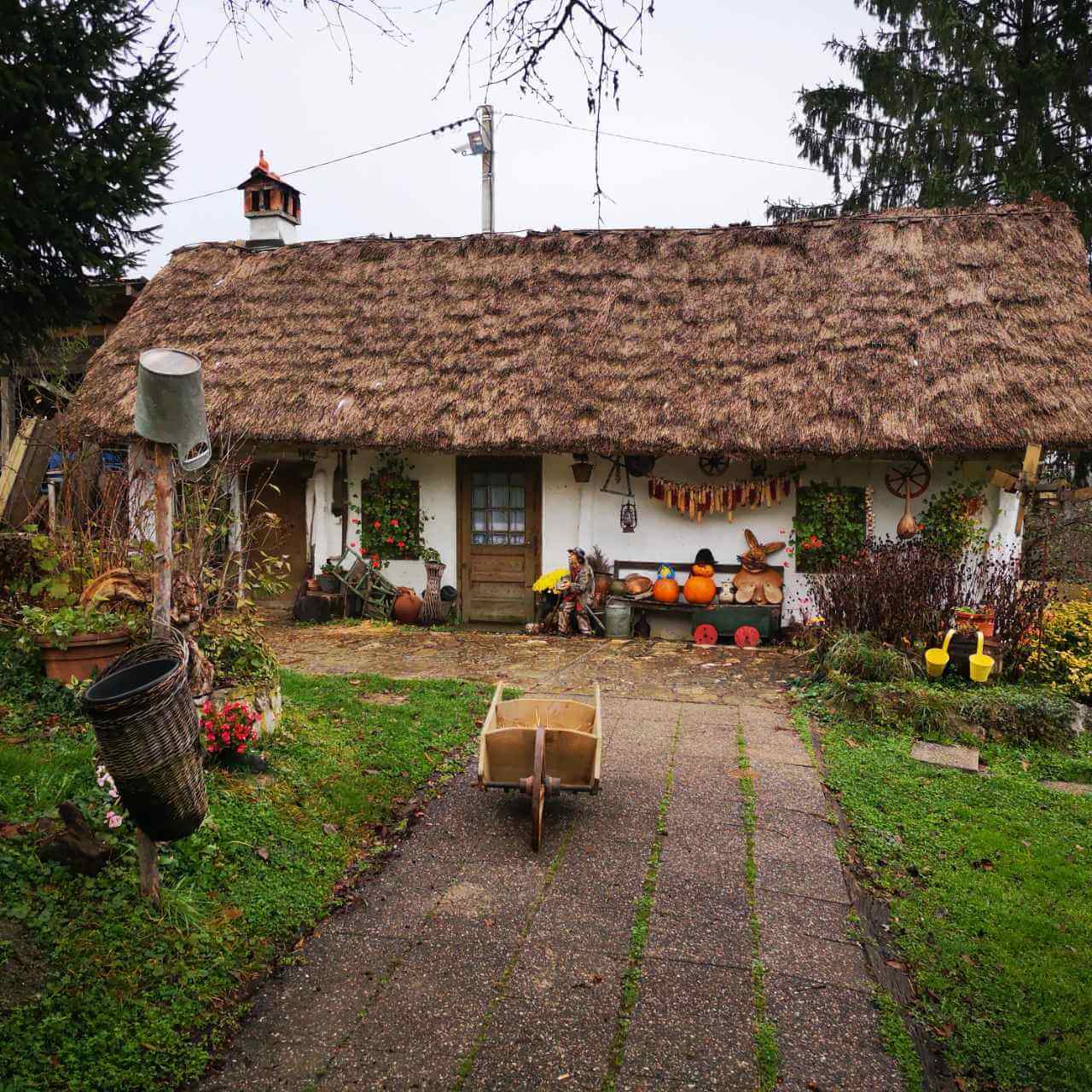 Grešna pilnica in Zagorje © Jasna Podboj
Grešna pilnica in Zagorje © Jasna Podboj
The second purpose of the app is to collect information about the service providers. This info will be used by our working group when defining a Croatian model of Seoski Tourism. So far, we have taken examples from Slovenia, Italy and other countries that are successful with Seoski Tourism. But, these models were entered into our legislative system without fully considering our distinct business and cultural environments. That is now about to change.
We are very happy that, following many years of partially successful advocacy, there is now political will at a ministerial level to really shape things up, to change the laws and regulations in order to facilitate Seoski Tourism. We want to encourage more Seoski Tourism, not to have people from agriculture being turned away because of the difficulty of the process and bureaucracy.
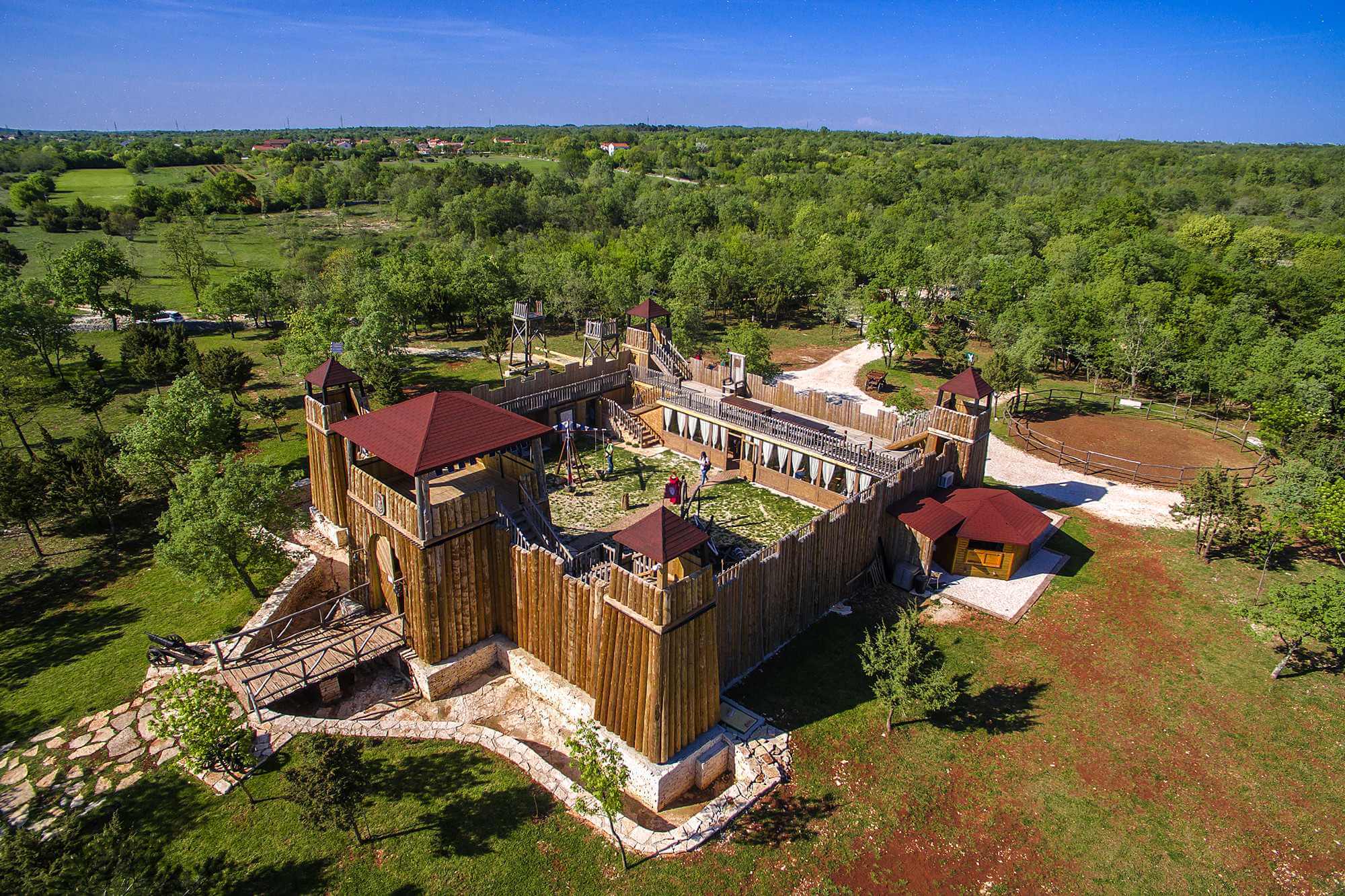 Medieval Theme Park San Michael © Silvia Otočan
Medieval Theme Park San Michael © Silvia Otočan
You said part of the workshops will focus on new trends. What are some of these?
Research has been done by a working group that is developing a new tourism strategy for Croatia. It's called Strategy for Sustainable Tourism to 2030. Under the auspices of this group, a number of research fields have been analysed.
The collected data shows that a huge percentage of tourists are now more inclined to eat locally grown and healthy food. They want to spend their time on estates that are run in accordance with ecological principles. So, they really care about issues like how waste is disposed of etc. They also pay a lot of attention to culture. They are curious to learn exactly how we are living, how we are working and how we produce things. They want to learn about our society and culture. And, importantly, they really care about how they spend their money. Above all, they want to spend money in areas that can help support local communities.
 Prigorje Breakfast at Rakić Family Farm
Prigorje Breakfast at Rakić Family Farm
For us, this is really important. Because Seoski Tourism answers these demands to an incredibly high level. We do produce local, healthy food. Not only on the agricultural estates where you can experience Seoski Tourism, but also from their neighbours who just do agriculture. We are concerned with ecology, we protect cultural heritage and the money spent in Seoski Tourism stays in local communities, where it has very beneficial effects.
In the digital promotion part of the workshops we are trying to persuade people about the importance of their online presence. Basically, these days, if you're not online, it's almost like you don't exist. So, we try to explain the importance of having good-quality photos, short videos and a regular online presence.
 Kulen, čvarci and other specialties at Baranjska kuća © Denis Despot
Kulen, čvarci and other specialties at Baranjska kuća © Denis Despot
That's interesting. In some cases, it might be like two different worlds colliding - people who work in a traditional industry and a traditional environment having to adapt to a very modern way of operating. There's also another potential collision when providers learn of the expectations within modern tourism. Because these people can no longer just work in agriculture. To operate in Seoski Tourism, you're also very much expected to also be a host.
Yes. All of our current service providers who are successful within Seoski Tourism are also great hosts. It's essential. You can see it in almost all of the reviews for this kind of tourism. Guests come for the food and drinks and surroundings, yes. But, what they value the most, what they remember the most, is the host part of the experience. On the estates of Croatian Seoski Tourism, guests are welcomed like family. Across all of Croatian tourism we are expected to be good hosts. It's part of our reputation and the reason why many people come here from all over the world. In Seoski Tourism, it is vital we live up to those expectations.
 Kezele family farm © Davor Konjikušić
Kezele family farm © Davor Konjikušić
Another aspect of this, which is a more recently-observed element, is that visitors often want an insight into the actual lives, even the personalities of their hosts. They want not only to taste the homemade sausages you make, but they also want to know how you do it, where you do it, how you learned to do that. When they go to Spain, they want to know how the people there make their wine. And, when they come to Croatia, they want to learn how we do it here.
So, all in all, those of us in Seoski Tourism are really busy. We are in agriculture, yes, but we are also in tourism and we are also online. With this more recently-observed aspect, we will need to try and devote even more time to our hosting. It can be difficult to balance the demands on your time. But, in our workshops, we are trying to persuade people to talk more about themselves, their lives, their cultural heritage. And, if there isn't time to do everything themselves, then to involve different and often younger generations of the family. Sometimes within the hosting or alternatively just with the online promotion and presence.
 Kezele family farm ethno collection © Davor Konjikušić
Kezele family farm ethno collection © Davor Konjikušić
I've visited some family farms that were right at the start of their journey with Seoski Tourism and they seemed surprised that I was at all interested in what they do and how they do it. I think maybe they thought I was a bit crazy.
Yes, that is a response we sometimes also see at first. I think it's because our generation takes a lot of things for granted. We sometimes think that what we do is just what we do. We are not so good at showcasing it. “Why would I show someone how I make my cheese? I make my cheese like my grandmother used to make it” But, for those who open their doors to Seoski Tourism, inquiries about how they do what they do are only increasing. So, they seem to appreciate how we advise them in the workshops.
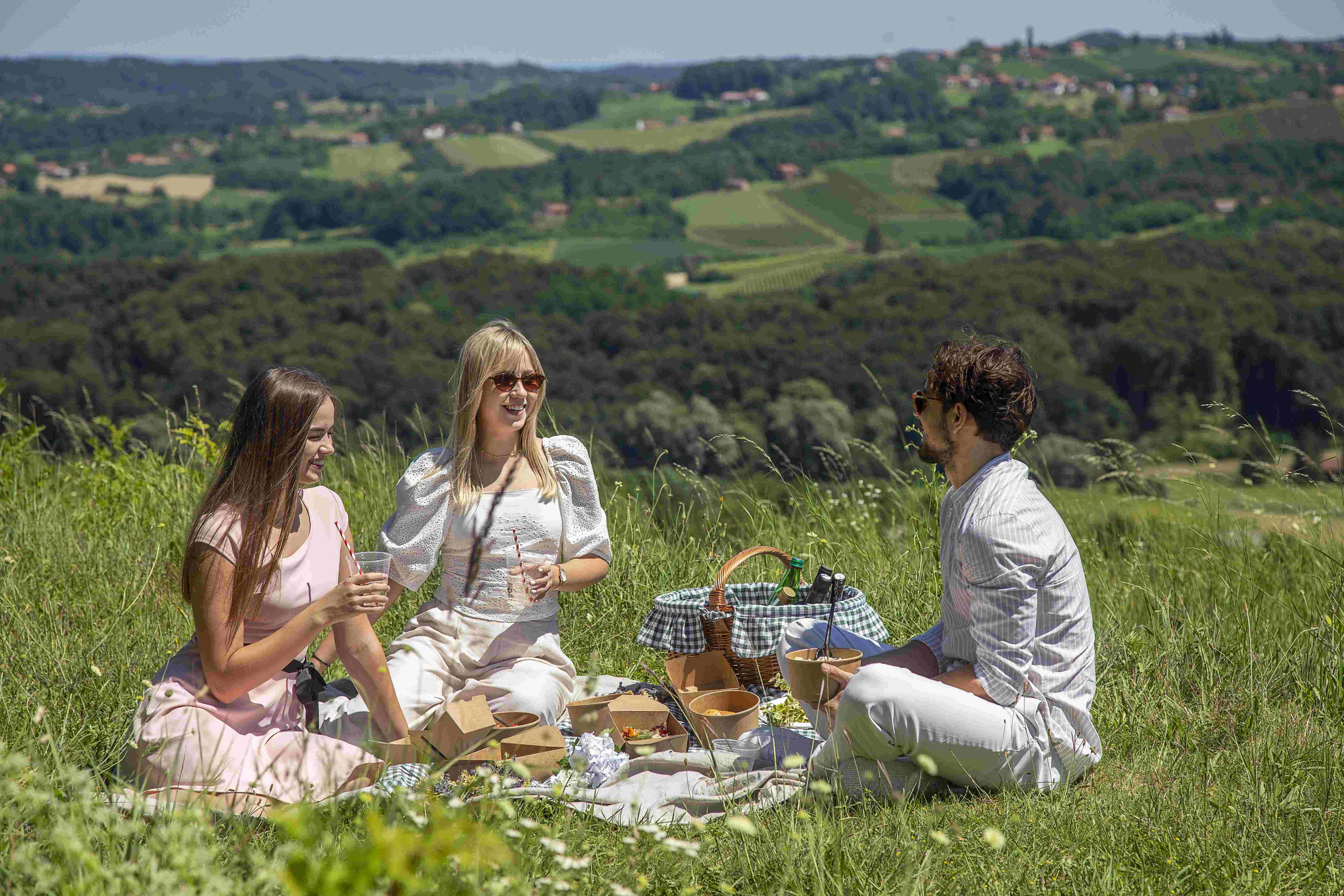 Picnic by Restaurant Međimurski dvori © Igor Nobilo
Picnic by Restaurant Međimurski dvori © Igor Nobilo
We are trying to let our producers know that Seoski Tourism is not just a platform to sell their produce and an overnight stay, but it's a full experience they can sell. There are agricultural farms in Austria that are established in tourism that you must pay only to visit. Of course, that doesn't happen currently anywhere in Croatia, even though some of our Seoski Tourism estates have sections that look like museums.
Some of these aspects are very new. And the feedback is great. I truly believe there are hidden treasures to be discovered in some Croatian villages. We are here to tell that story.
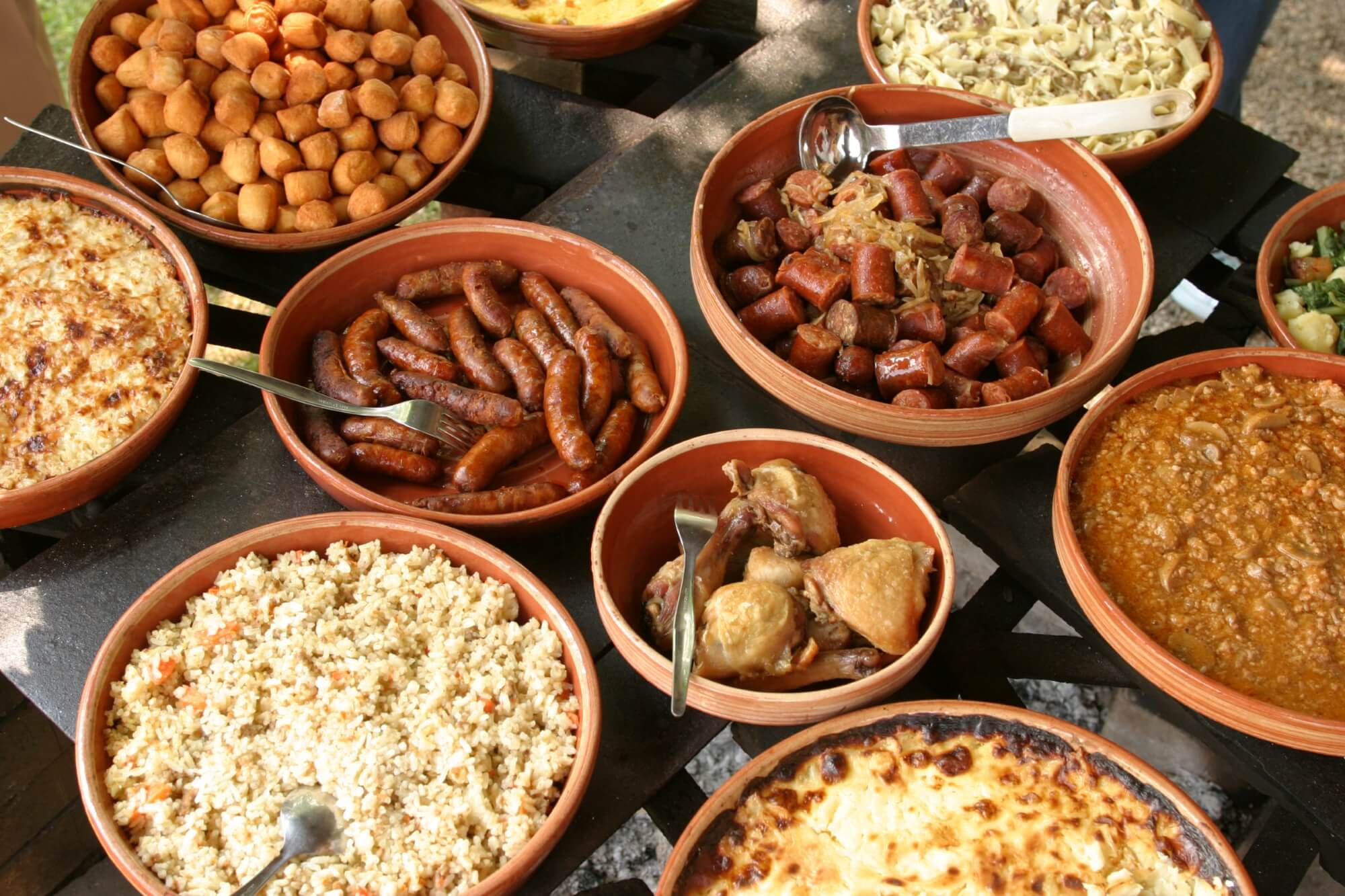 Selection of food from a Slavonian village © Mario Romulić
Selection of food from a Slavonian village © Mario Romulić
What is so rewarding about Croatian Seoski Tourism that international visitors would want to go to a traditional farm in some inland village instead of lying on the beach in Dalmatia for 14 days?
People come because they really want to see a different side of Croatia. And, there are many different aspects of Croatia to discover – not just Seoski Tourism, but also National Parks and Nature Parks. All of our current trends show us that more and more tourists are willing to come inland from the coast or to explore a different part of Croatia – inland Istria, for example, or continental Croatia.
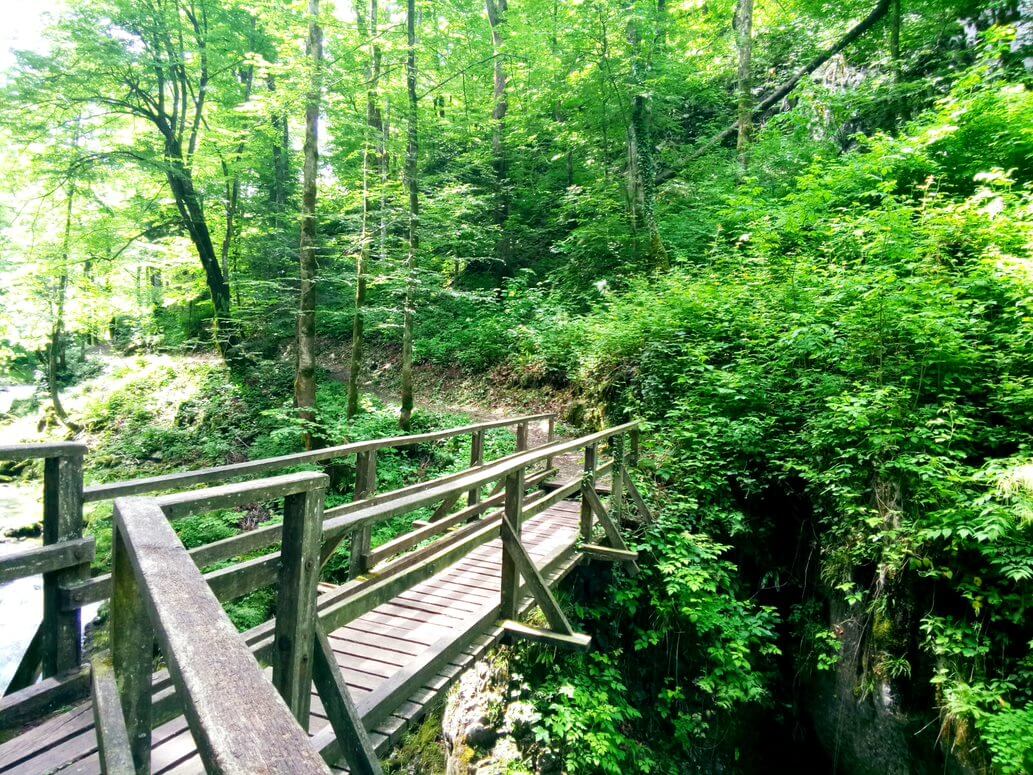 Kamačnik river canyon © Aleksandra Kuratko Pani
Kamačnik river canyon © Aleksandra Kuratko Pani
They really want to try authentic, local food. They want to eat healthy, to know what they are eating and how it is made. And, they want to experience flavours that are different from the usual ones they get from the supermarket.
 Traditional Međimurje table at Etno restaurant Međimurski dvori
Traditional Međimurje table at Etno restaurant Međimurski dvori
Also, I would say that with Seoski Tourism, people get to know better an authentic version of Croatia and its culture. It's a story we hear very often from our members. Some of them are visited by large groups from cruisers. These are people who might be on a cruise on the Adriatic and who journey inland for a day trip. Or, it might be a group who are cruising the Danube and disembark to visit a family farm in Slavonia, Baranja or Srijem.
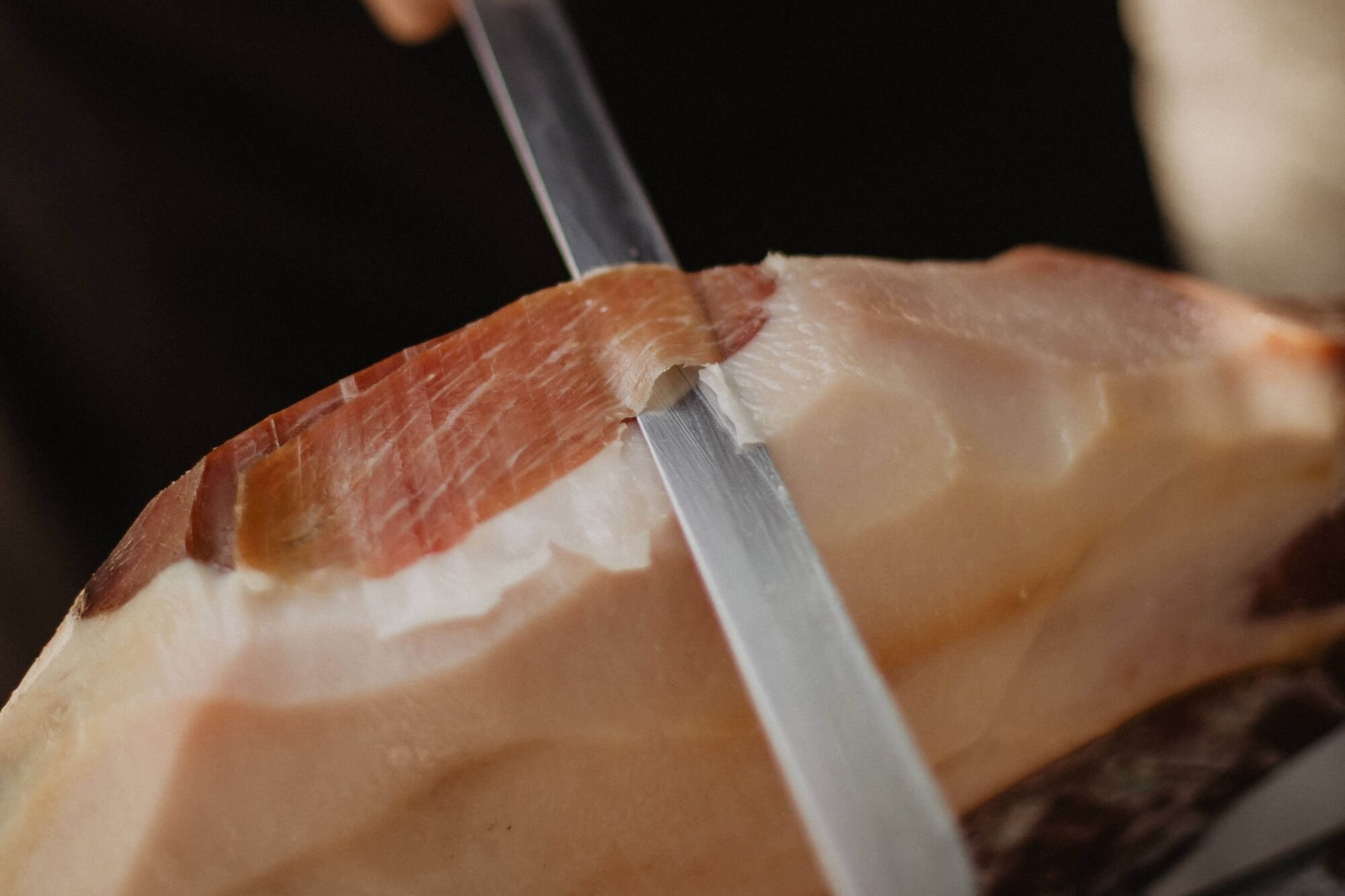 Prosciutto from Drniš at Agrotourism Kalpić © Ivana Kalpić
Prosciutto from Drniš at Agrotourism Kalpić © Ivana Kalpić
When they visit farming estates on day trips, it's very often a huge 'wow' moment for them. For many, in their minds, Croatia is simply sun and sea. And that's not entirely their fault. We, as a country, have done very little until now to promote alternative sides of Croatia. The visitors experience these wow moments because of the hospitality they receive and because of the tangible aspect of the visit. This is a modern aspect – people want to touch things, know how things feel, taste, smell. They want to ride on horses or feed them. Or take part in cultural activities. These parts of a visit to Seoski Tourism are very difficult to experience anywhere else.
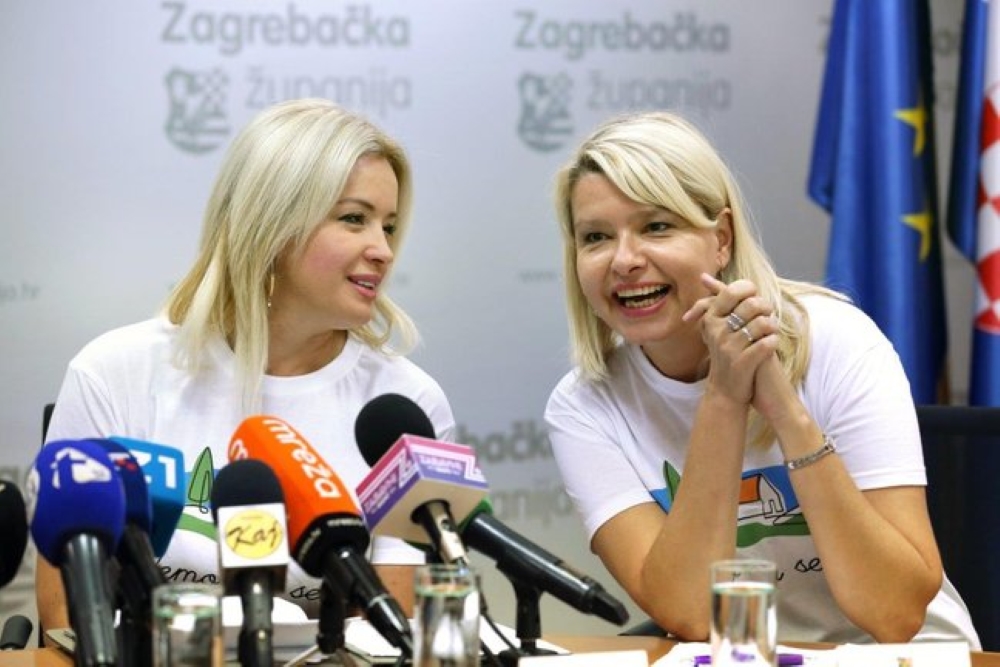 (left) Ivana Alilović, director of Zagreb County Tourist Board (right) Aleksandra Kuratko, secretary of Udruga ruralnog turizma Hrvatske (Croatian Rural Tourism Association) © Zagreb County
(left) Ivana Alilović, director of Zagreb County Tourist Board (right) Aleksandra Kuratko, secretary of Udruga ruralnog turizma Hrvatske (Croatian Rural Tourism Association) © Zagreb County
Udruga ruralnog turizma Hrvatske's online Seoski Tourism workshops begin today and their physical workshops continue next week in Istria.
If you'd like to read more about rural tourism in Croatia, then look here
Five Things Not to Miss Along Dalmatia's Cetina River
Since back during ancient times, proximity to water meant life, and now even in the 21st century it is still exactly the same. One of the most rich rivers in Croatia is the Cetina river, found in the rocky Dalmatia region, which breathes life into everything near and surrounding it. Undoubtedly, this 105km long river offers an assortment of benefits to the local population from; powering several hydropower plants, acting as a source of fresh drinking water and being the back one to the growing Croatian family adventure tourism market.
From the water source’s majestic beginnings, at a height of 385 metres in the Dinara mountains to its humble end, emptying into the Adriatic Sea, the Cetina has many personalities to enjoy. In this article, I will tell you a little more about my favourite sections of the river and how to enjoy it safely and with full respect to nature.
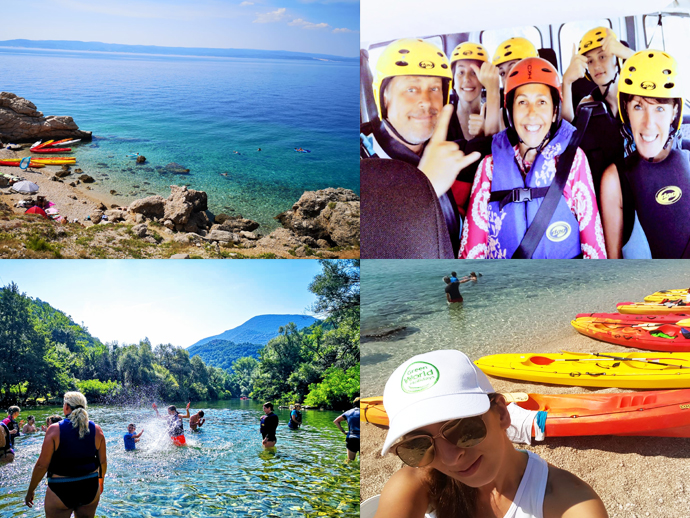
Green World Holidays
River tubing
River tubing is great fun, and not just for adults but also for active families holidaying in Croatia. Sitting in giant inflatable donuts, you’ll have the unique opportunity to descend down small river rapids powered only by your hands and feet. Located slightly north of the village of Kučiće, there is a perfect three-kilometre river section, with many memorable twists and turns. If you want to splash and have fun, and see the Dalmatian hinterland from a very rare perspective, then I can highly recommend this activity when visiting the Cetina river.
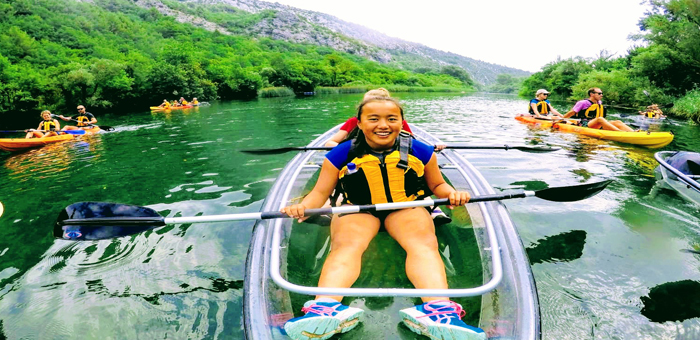
Green World Holidays
Kayaking
All over the world, kayaking is enjoyed as a recreational sport and its particularly popular in Croatia. Our country is blessed with an abundance of pristine rivers, lakes and a stunning coastline, so there are no shortages of places to rent a kayak and enjoy a water adventure. From my experience as a guide, one of the best kayak routes can be found on the Cetina, as the water transcends from sparkling emerald waters to the blue signatures of the Adriatic Sea. This picture postcard perfect route also runs through Omiš, one of the prettiest towns in Dalmatia. Famed for its historical pirates, bringing fear to the whole of the Mediterranean sea throughout the 12th and 13th centuries.

Green World Holidays
Although there are no pirates in Omiš now, I can still guarantee that this is one of the most memorable kayak experiences available. In addition, and unique to the Cetina river, guests can rent see-through kayaks, so as you paddle down the river you can explore the flora and fauna growing along the bottom of the river and enjoy feeling one with the water.
Mini rafting
As a qualified rafting guide for many years, I’ve been fortunate to have experienced the best sides to the Cetina river, and still to this day, one of my favourite activities is mini rafting. Unlike kayaking and river tubing, mini rafting is done on the northern part of the Cetina river, where you’ll find exciting river rapids and challenging waterfalls to descend. Going down the class 2 and 3 rapids (the scale is up to 6) in an inflatable canoe raft is an
adrenaline packed adventure. Along this section of the Cetina, adventurous families will discover one of the prettiest river beaches, called Stružica, which is very popular among the locals.
Professional tours typically conclude in the village of Blato na Cetini and over there you can have lunch in a little restaurant along the bank of the river. This has become a popular tour for family activity holidays in Croatia, allowing parents to better bond and connect with their teenagers, as they steer their own destiny along the Cetina river.
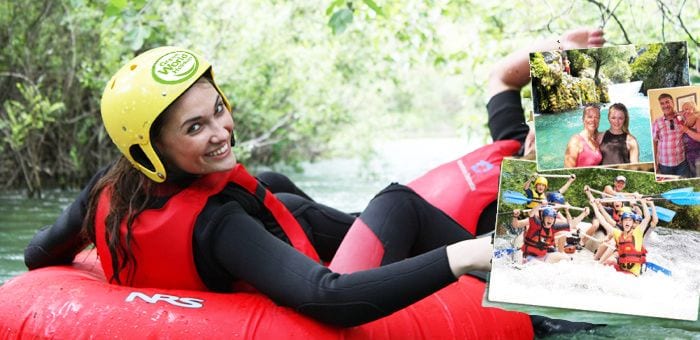
Green World Holidays
Canyoning
Canyoning along the Cetina is an unmissable adventure activity when visiting this Dalmatian region. Expert guides help lead the way and help adventurous guests to plunge into these newly discovered rocky areas and clear waters, providing the most exhilirating and unforgettable experience. It’s a true treat to be able to swim underneath powerful waterfalls, flow down naturally formed chutes, and jump into emerald pools of water. It's more fun than you can imagine and that’s why it's an unmissable experience when visiting anywhere close to the Cetina river.
If you decide to do the extreme version (not for families!) you can abseil down next to one of the highest waterfalls in Croatia, Gubavica (56 metres high). The starting point is in the village of Zadvarje and the finish is next to the oldest power plant on the Cetina river, called Kraljevac. Unlike white water rafting, canyoning is ungraded. So before booking with any sports agency, ask the right questions and discuss what you can expect with the experience. Remember, no canyon is the same!

Green World Holidays
White water rafting
White water rafting is the most popular activity on the river Cetina. The route that you pass along this section of the river is about 10 kilometres long and you will face Grade 2 and 3 rapids. The starting point is north of the village of Kučiće and concludes next to one of the most famous restaurants in Dalmatia, Radmanove Mlinice. On the river, there are a lot of agencies that provide eight-man rafting tours.
Active and sustainable tourism
I hope this article has inspired you to explore the river Cetina and please remember to respect nature. We only have a future if we look after our planet now and give back to the environment and local communities. To try these activities with an Eco-friendly travel company, then contact – Green World Holidays –– a company that believes in sustainable tourism to create wonderful family activity holidays in Croatia. See their INSTAGRAM STORIES – www.instagram.com/

Green World Holidays
Follow our dedicated lifestyle and travel pages for more. If it's just inland Dalmatia you're interested in, give Total Inland Dalmatia a follow.
Can Inland Dalmatia Become the Croatian Tuscany?
The Inland Dalmatia or ‘Zagora’ part of Split-Dalmatia County takes up a small slice of the tourist cake in the region. With even more opportunities to be realized, year after year, tourism in this part of the county is growing, reports Slobodna Dalmacija on February 15, 2019.
The Croatian Tourist Board even recognized this. Thus, the area that borders Vrgorac, the Imotski and Cetina region, Dugopolje and Klis were declared the most successful destination for rural tourism in Croatia in 2018. Just one year before, that same destination was in the final fight for this prestigious award.
Last year, Inland Dalmatia deservedly ruled regarding rural tourism in Croatia. And it remains a destination of unexplored beauty.
The leading Croatian tourism workers have long realized that the sea and the sun, which is in abundance along the Croatian coastline, is no longer sufficient for a more attractive tourism clientele.
Not far away, Croatia’s coastal neighbors are an example that you don't need a beach holiday when you can visit the country’s Tuscany.
The Inland Dalmatia region of the Central Dalmatian County - which includes the towns of Sinj, Trilj, Imotski, Vrgorac and Vrlika, and the Dugopolje and Klis municipalities - abounds in the richness of historical and cultural heritage and still unexplored, almost virgin natural beauties such as karst fields surrounded by mountains, adorned with crystalline rivers and lakes. Tourist experts also keep this area for the adventurers who want to enjoy native cuisine.
In this area, the traditional heritage has been recognized in the world as valuable with protection through UNESCO, such as klapa singing, Inland Dalmatian folk dancing “kolo”, Inland Dalmatian folk singing “ojkanje”, Sinj Alka, and medieval tombstones.
The comparative advantages of Inland Dalmatia as a rural tourism destination is the distance of only half an hour by car from Split Airport and major coastal tourist destinations such as Split, Makarska, and Trogir.
All of Inland Dalmatia also boasts excellent road connections with the state roads and Dalmatia. Of the public tourist infrastructure, it is indeed worth mentioning the MEDPATHS trails. In Sinj, there are three cycling and two trekking trails with a total length of 145 kilometers.
Trilj has built one wine, five bicycle and two trekking trails with a total length of 126 kilometers, and in Vrlika, there are three cycling, four hiking and one pedestrian trail with an entire length of 131 kilometers. Particularly marked is the pilgrimage trail named Sinjska Staza in the length of 148 kilometers, connecting Solin, Sinj, Livno, Tomislavgrad, and Rama.
There are also camps, the thematic walking route of the Roman road, the walkway around the Blue and Red Lake with a viewpoint, and the new thematic trails around Peruća lake and in the areas of Dugopolje, Imotski, Klis, Sinj, Trilja, Vrgorac, and Vrlika.
Inland Dalmatia as a tourist destination still has modest accommodation capacities: 707 beds in six hotels, of which five boast 3 and one 4-stars, 11 beds in the only hostel, 32 camping spaces, 13 beds in two OPG, and in 360 private homes, 2261 tourist beds.
The growth is indicated by the fact that in 2017, compared to the previous year, the number of accommodation facilities increased by 60 percent and the number of beds by 37 percent.
In particular, the Imotski region already has more than 200-holiday houses with swimming pools whose occupancy is equal, and in some cases higher than hotel capacities along the coast and on the islands.
Through 2017, Inland Dalmatia recorded 84,100 tourist arrivals, which generated 204,973 overnight stays. Compared to the previous year, the number of arrivals increased by 61 percent and the number of overnight stays by 44 percent. Among foreign guests, Germans visit the most, followed by guests from Korea, Poland, and Spain.
There are 54 restaurants, eight family farms and five wineries available to visitors in this part of the region.
This is all great potential for tourism as a branch of business, and could even contribute to stopping the demographic downfall the area. Because if the trend of emigration continues, tourists will not have anywhere to visit. That is why the recognition of Inland Dalmatia as a leading destination for rural tourism in 2018 should also be understood as a demographic stimulus that is needed for this economically underdeveloped space.
Translated from Slobodna Dalmacija
To read more about Inland Dalmatia, follow TCN’s dedicated page.


